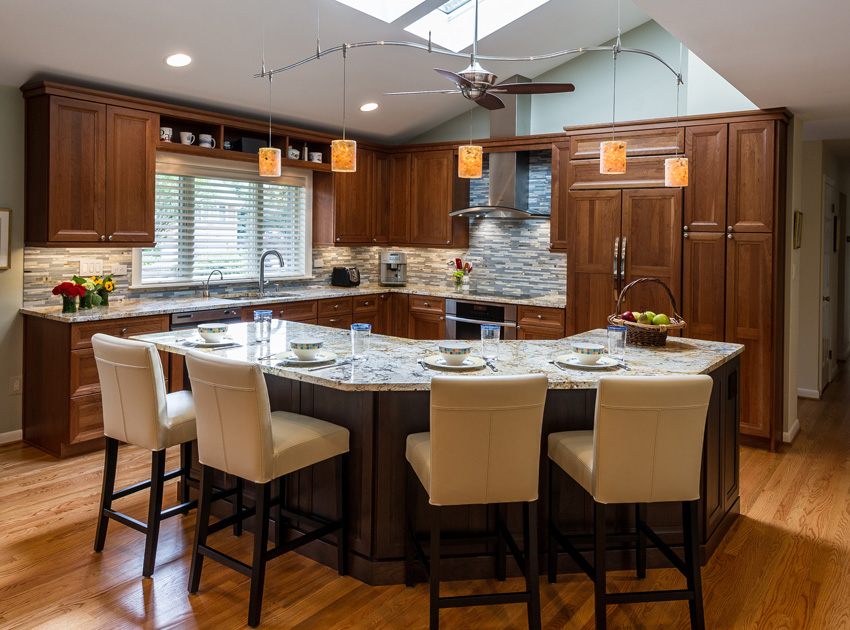Getting your ducks in a row when it comes to home renovation can be an overwhelming task. From budgeting, design considerations, permits, and whatnot – there’s a lot that goes into renovating a space. One of the most important aspects is designing new floor plans for your remodel – this will help you visualize how the space will look after you finish your project.
Creating these floor plans can be daunting at first glance but by breaking down the process step-by-step and taking some time to plan out each room one by one it becomes much more manageable.
On top of creating plans, you have to consider whether you’re going to do the work yourself or hire a professional. Even if you are hiring someone else, it’s important that you understand the basics of designing and drawing floor plans so that when it comes time to discuss what needs to be done, there won’t be any miscommunication between both parties.
It is complicated and if this is your first time, it can be confusing. This article will provide an overview of the process and explain the factors that you need to consider when drawing floor plans so that you have a successful remodel project.
So, let’s dive into the world of drawing up a proper remodel floor plan. With any luck, by the time you’re done reading this, you’ll be well on your way to having an amazing new space that reflects your individual style.
Why Are Floor Plans Important?
If you’ve never done this kind of project before, you may be wondering why floor plans are so important for a remodel project. The answer is quite simple – having detailed and accurate drawings of your desired layout will help make sure that the renovation process goes as smoothly as possible.
It ensures that everyone involved in the project (be it yourself, a contractor, or an interior designer) has an understanding of what they’re working with before they get started.
Now, a good floorplan will include several pieces of crucial information:
- Room dimensions:
- This includes precise measurements of all the walls, windows, and doors that are in each room.
- Electrical outlets:
- This is important for any electrical work you may be doing during your renovation.
- Locations of plumbing fixtures:
- You’ll want to know where these will go before starting on any plumbing work.
- Furniture locations/sizes:
- If you plan on buying new furniture for the remodel, it’s important to map out exactly where each piece should go so that there’s enough space around them and they won’t take up too much of the floor area.
- Appliances placement/dimensions:
- Knowing where your appliances will fit ahead of time can save you a lot of headaches when it comes time to install them into their designated spots in your kitchen or other areas throughout your home.
Drawing up an accurate floorplan also allows you to visualize how all aspects within a given room come together – this includes furniture pieces, wall decorations as well as any other items you may have in the space. This way, when it comes time to purchase materials for your project, you’ll already have a plan in place and won’t be overwhelmed with all the choices available at stores.
There are many reasons why having a floorplan is absolutely necessary:
- To ensure that all renovations are done accurately and efficiently:
- As we mentioned, the information on a floorplan helps to ensure that all renovation work is done correctly and according to your specifications.
- To avoid any costly mistakes:
- Without a plan in place, it’s easy for things to get overlooked or forgotten during the remodeling process – this could lead to some costly mistakes down the line.
- To save time on decision making:
- Having an accurate floor plan helps speed up the decision-making process as you can easily see what items would fit best in a given room without having them physically present there.
- As an aid when shopping for materials/furniture:
- This goes hand in hand with saving time on decisions – if you have an exact measurement of where something needs to go, it makes your shopping trips much more efficient since you already know exactly what size item fits into a designated space.
In short, drawing up floor plans is one of those foundational steps that need to be taken in order for a remodel project to go smoothly. Being able to visualize the end result ahead of time will help you stay organized and on track throughout the entire process.

Tips For Drawing Floor Plans
Now that we understand the importance of having a good floor plan, let’s go over some tips that will help you create one. It may seem intimidating at first, but by following the steps outlined here, you’ll be well on your way to having a plan that accurately reflects all of your design ideas.
Here are some helpful tips for drawing up floor plans:
- Take accurate measurements and use a measuring tape or laser measurer when needed:
- This is key in order to ensure that everything fits properly within each room.
- Start with basic shapes such as squares and rectangles then add details like windows and doors later on:
- This makes it easier to visualize how different pieces fit together without getting overwhelmed by too much information at once.
- Use renovation designer software if available:
- These programs allow you to quickly draw out floorplans in an organized manner while also allowing for customization options so they can reflect what’s actually happening in the physical space itself.
- Consider any existing furniture/appliances you have before creating a plan:
- If there are certain items already present within the space, make sure these are taken into account when designing your layout – this ensures everything fits properly after installation is complete.
- Label everything on your plan:
- This includes walls, windows, doors, and anything else you may have in the room. Labeling helps to keep track of different elements within a given space.
Once all of your measurements are taken and shapes are drawn out, it’s time to add any additional details that will be necessary for the project such as electrical outlets or plumbing fixtures. Make sure these are accurately placed so that any work done during installation goes smoothly – chances are you won’t want anyone having to cut through walls or floors if there’s an easier solution available!
We also recommend ensuring that there are certain things on your floor plan to simplify everything, for example:
- A key:
- Keys on maps and floor plans are so useful that most people forget that their addition is an intentional choice. Adding a key that explains that, for example, a square is a window, a circle is an electrical outlet, and so on will make it easier to understand the plan.
- A compass:
- This helps you orient yourself in the plan and know exactly which direction North is – this can help when trying to determine where furniture should be placed or what wall items should go where.
- Scale:
- A scale will help ensure that your measurements are accurate as well as give you an idea of how large certain elements within the room may appear once everything’s installed.
- Wall thicknesses/types:
- Knowing which walls are load-bearing or non-load bearing can be extremely helpful prior to any demolition work being done.
Some people do hire interior designers to help with this, but as long as you take your time, do your research, and follow these tips – you should be able to design a plan that accurately reflects your vision in such a way that any professionals you hire to help can easily understand it.
Everyone wants to make sure that their home renovation project goes as smoothly and accurately as possible, which is why having a detailed floor plan is so important. By taking the time to measure, draw shapes, and add details such as electrical outlets or plumbing fixtures you’ll be able to ensure that everything fits together perfectly once installation begins.
Additionally, it’s important to include things like a key for symbols used on the plan, a compass for orientation purposes, and scale measurements in order to make sure all of your calculations are accurate. With these tips in mind, you should be well on your way toward creating an amazing space that reflects your style and taste in home design.
Making Your Home More Beautiful
It’s amazing what a few changes to your home can do! With careful planning and design, you can turn an ordinary space into something truly special. Whether it’s adding custom built-ins or changing the layout of a room completely – it’s possible to create a beautiful home that reflects your individual style.
Getting your ducks in a row when it comes to home renovation can be an overwhelming task. From budgeting, design considerations, permits, and whatnot – there’s a lot that goes into renovating a space. One of the most important aspects is designing new floor plans for your remodel – this will help you visualize how the space will look after you finish with your project. Creating these floor plans can be daunting at first glance but by breaking down the process step-by-step and taking some time to plan out each room one by one it becomes much more manageable.



